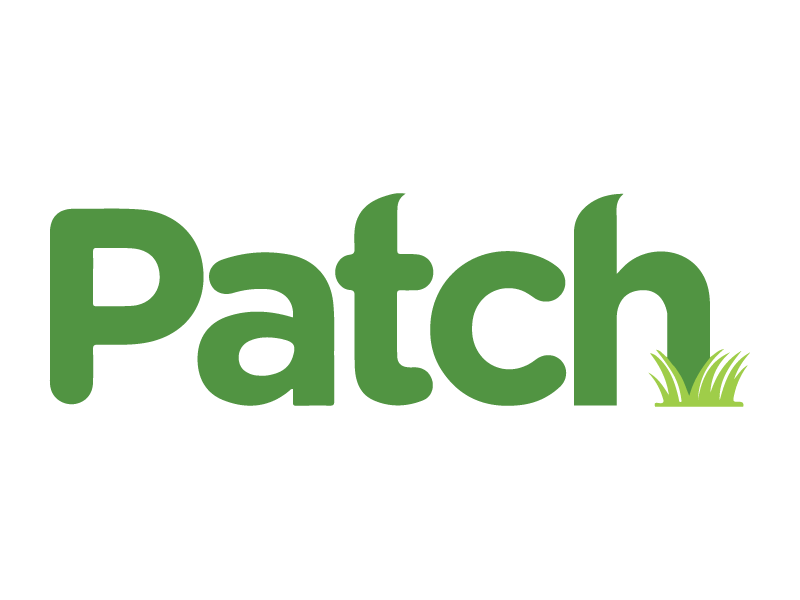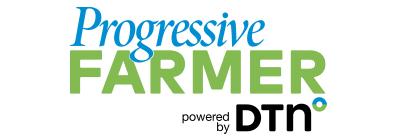gamagana.blogspot.com
SDI Productions/Getty Images
Kirk Gallegos is a single father of four. He works construction in Barstow, Calif. Prudence Carter is a single mother of one. She's the dean of the Graduate School of Education at the University of California, Berkeley.
Both of them share the same problem with tens of millions of other parents around the country: Their public schools aren't operating full time in-person this fall. And the rest of the child care system, which had been stretched even before the pandemic, is itself under pressure.
The child care sector consists for the most part of small businesses and nonprofits supported by a patchwork of public subsidies. Centers and in-home day cares are mostly owned and operated by women, disproportionately women of color, many of whom live at poverty wages. Child care centers and after-school programs have lost income during shutdowns and because of state and local budget cuts, and many have been forced to close for safety reasons. Republicans have proposed $15 billion for the child care sector in the latest coronavirus aid package; Democrats are seeking more than three times that.
In the interim, families are being left to improvise. They're having to consider not only their children's safety, but also their academic progress and their well-being after months of isolation.
"I think parents are just trying to do what they have to do to survive in this moment," sums up Carter, who is a scholar of inequality in education.
Parents have a few different options, but none of them come without trade-offs, and they aren't available to all families equally.
Option 1: Step back from the workforce
The first resort for parents, and particularly mothers, is working less to take care of their own children. We're in an employment crisis anyway, but caregiving responsibilities are keeping some parents from even looking for work. A recent survey from the Bipartisan Policy Center found that 55% of Hispanic and 44% of Black parents on unemployment insurance were not planning to or did not accept an offer to return to work due to caregiving needs.
Gallegos, the construction worker, until recently had to juggle job hunting with taking care of his girls, who range in age from 1 to 10. "I would take them with me [on interviews], or [search] online. I didn't want to use the day care unless I really, really, really needed to."
For those who have the relative privilege to work from home, there is a subtler toll on productivity and well-being, particularly for mothers. Many are splitting their schedules, getting up early and staying up late to work while children sleep. Carter cites an analysis from her own field of higher education, suggesting that across disciplines, male scholars are producing relatively more work than their female counterparts, more so than before the pandemic.
Even as she's working to shift policies to make sure that her own faculty, staff and students who are caregivers aren't penalized for lagging research and publication under these conditions, Carter laments her own loss of "concentrated time." "It's really hard to write. I was hoping to get a new project off the ground this summer."
Option 2: In-home day cares
For school-aged children who don't have a family member to watch them for free, organized group child care and afterschool programs are the most common option, according to a recent policy analysis by the Urban Institute. But the pandemic has shut many of those as well, because the group sizes are too large for social distancing and cohorting, or because they've lost access to public school buildings, or both. That leaves the next most popular option: in-home day cares. Pre-pandemic, these small neighborhood businesses took care of 7 million children, including around 30 percent of infants and toddlers, according to the nonprofit Home Grown. Across the country almost all of these providers are women and almost half are women of color.
In-home care is the most affordable option for most families too — averaging around $300 a week for up to 11 or 12 hours a day, depending on the location and the age of children. The costs tend to be lower if you qualify for public subsidies.
Because of their size, these in home day cares have fewer licensing requirements. And industry experts said less staffing and overhead mean that women who run their own home-based day cares can make more money than they can in a standalone center.
"The long term vision of our company is to get more people to actually start their own home daycare," says Jessica Chang, the CEO of WeeCare. WeeCare is a platform that works sort of like a Lyft for in-home day cares, making thousands of these businesses searchable and helping with overhead like marketing and billing.
Chang, and Chris Bennett of Wonderschool, a similar platform, both argue this is a model that is nimble enough to potentially scale up to meet the sudden demand for care for school-aged children — if it had the right support.
"We're getting a lot of interest from folks who want to start microschools, and a number of our providers are expanding, too," says Bennett.
Gallegos qualified for a county subsidy to send his four daughters to Little Barstow WeeCare. He drops them off at 6:30 or 7 in the morning and picks them up in the evening. "They love it. I drop them off and sometimes they forget to say bye, they're running down the hallway to do whatever they want to do."
Maria Jensen, the owner-operator, helped him get in touch with the principal at his older daughters' public school to make sure they would have computers to do their schoolwork. When school starts remotely Aug. 10, Jensen will oversee them while they study.
"I talked to a few other day cares, they said they had room and they could take them, but they weren't doing the school part — the academic part. That was one of the most important parts to me."
Natalie Renew directs Home Grown, a nonprofit dedicated to improving the quality of in-home child care. She says many centers already take older kids after school, and she sees this sector stepping up to care for school aged children during the day.
"We're definitely hearing that there is demand and providers are getting calls from parents as school districts release their plans for the fall." But even as demand is growing, supply is in danger of falling. Child care providers who lost headcount and revenue during shutdowns are in danger of losing not only their businesses but their homes. Without a bailout, says Renew, "It's really sort of looking over the edge of a cliff. Many, many providers are already starting to close."
Health and safety is another key concern for in-home providers, as it is for anywhere people gather indoors during the pandemic. Renew says there isn't a lot of good evidence yet on just how safe these settings might be. But there are hopes that, "given the small group size of home based child care, that the threat of transmission may be lower there."
Ani Angel Gharibian runs Busy Bee, another WeeCare, in Los Angeles. She serves many children of essential workers, and is investing in desks and other equipment to expand to take in more school-aged kids during the day, as LA schools are coming back online-only. She says it's impossible to socially distance from infants, and she doesn't like making children wear masks all day, because, she says, it's bad for their language development and makes them "timid". She and her employees are nervous, but she says, "people are desperate for income at the moment. So even if they do have some reservations, priorities take over."
Option 3: "Pandemic pod"
One of the options that's gotten the most attention is associated with families of greater means — variously known as a "learning pod," or "pandemic pod." Generally, this means getting together a group of a few children to share the cost of a tutor, typically hosted at families' homes.
Ivan Kerbel is the founder of the Seattle area Facebook Group for founders of what he calls "pandemic-era nano-schools." He has two young children. Like so many parents, he's "in this impossible pickle of child care, parenting and schooling while doing our ostensible jobs."
Kerbel also wants his children to be able to play safely with other kids and to learn subjects like math and science by cooking and gardening, not just on the computer.
So he started this group to find other families who were interested in doing the same. There are now over 4,000 members in the Seattle area. Pandemic pod matchmaking groups like these have sprung up quickly all over the country. And the critiques have come just as fast and furious. In Oakland, Calif., a group of 14 public school principals signed an open letter this week criticizing the practice.
One aspect that particularly bothers critics is the idea of hiring teachers directly away from public schools who may be wary of the classroom this fall for safety reasons. Melinda Anderson, a journalist covering education and equity, calls the practice "pandemic driven opportunity hoarding." "Opportunity hoarding" is a sociological concept that basically means a group in power is grabbing up resources and excluding a less powerful group. Anderson says, "parents forming pandemic pods and micro-schools did not create school inequalities, but they're certainly exacerbating inequalities by seeking out options unavailable to everyone."
Some critics have gone farther. A Washington Post column compared the practice to that of white families a half-century ago seceding from the public school system and forming "segregation academies" in resistance to Brown vs. Board of Education.
Carter, the dean of the graduate school of education at Berkeley, doesn't see things in quite those terms. "Is this like post-Brown? I don't think so. I think the country's consciousness is at a different level." Casting these issues in terms of race and class leaves out affluent, educated parents of color like herself, she said, and "there is a presumption that working class and poor parents don't want these pods themselves."
Carter happens to be thinking about forming a learning pod, not only to get more time to write, but also because her son is lonely. "My child is crying, as an only child, saying, 'I miss my friends.' " At the same time, as a scholar, she's " thinking about how to minimize the impact of privilege on children's learning."
For example, Carter says it's important that pandemic pods be as temporary and informal as possible, and that families keep their spot in public schools, if possible, using the remote learning offered by the district, so that schools can hold on to the funding. She doesn't like the idea of parents going fully out on their own — leasing spaces and forming more permanent "micro-schools."
"I am not interested in the privatization of public education and this becoming an alternative." She also suggests that parents of means not push their children too hard academically this year. Everyone will have catching up to do when in-person schooling resumes, and age-based standards, she says, are arbitrary anyway. "I don't know about you, but when I was a little girl, I wasn't reading by the end of kindergarten."
One idea that's popped up to address equity concerns is to have each pod include a sliding scale or scholarship spot. Ivan Kerbel says he's trying to institute a rule in his Seattle group: "If you have a group of four kids, the fourth kid is free, if you have a group of five kids, the fifth kid is free." For example, Kerbel says that he's planning to set up ukulele lessons for his 5-year-old. He is in touch with a local refugee resettlement agency to see if a Somali refugee child is able to join.
Carter cautions that pods that include a "diversity" slot also have to work hard to be inclusive. "What are you going to do socially and culturally to make sure that that child feels deeply included?"
Kerbel has personal experience with this. He says when he emigrated from Eastern Europe as a child, barely speaking English, a classmate was assigned to be his friend. He remembers feeling grateful.
He adds that he feels that children are going to learn not only math or music right now, but also directly from the choices we make: "How did their parents respond to the pandemic? Did they widen their social circle? Did they broaden their horizons? Or did they just sort of hunker down and, you know, shut the rest of the world out?"
Carter sees the pandemic magnifying all kinds of inequities, but in some ways it's also putting many different kinds of families in the same boat.
"We don't have leadership. Resources are so minimal. And so people are trying to use their innovation to just make things work so that they can actually continue to support the families."
Let's block ads! (Why?)
"trade" - Google News
July 31, 2020 at 06:00PM
https://ift.tt/33bGKIb
What Are Parents Doing For Child Care? Here Are 3 Options (With Trade-Offs) - NPR
"trade" - Google News
https://ift.tt/2VQiPtJ
 McDermott Will & Emery offices in Washington, D.C. Photo: Diego Radzinschi/ALM
McDermott Will & Emery offices in Washington, D.C. Photo: Diego Radzinschi/ALM



-xl.jpg)










